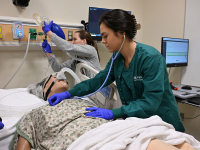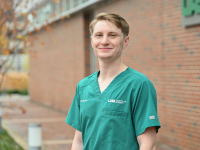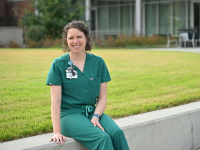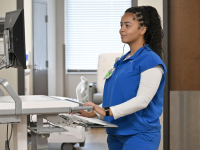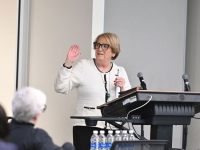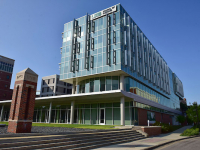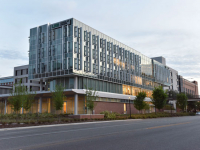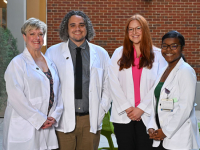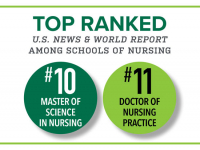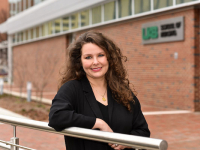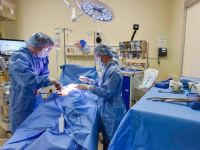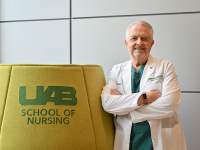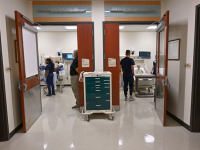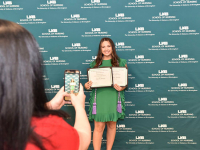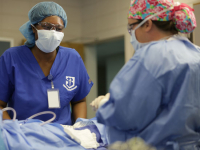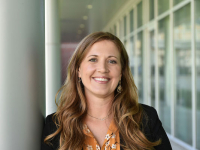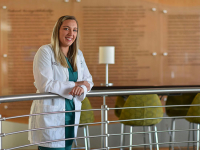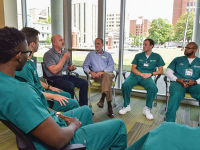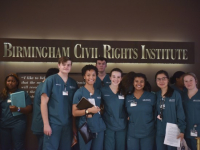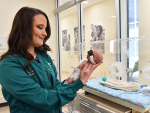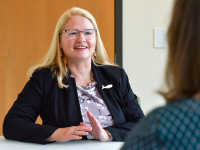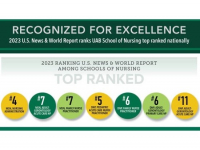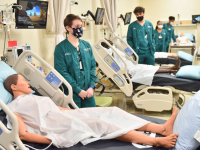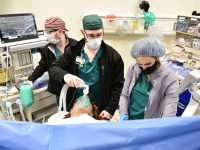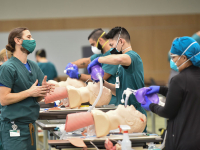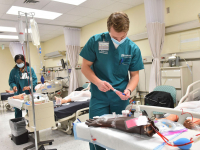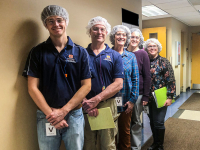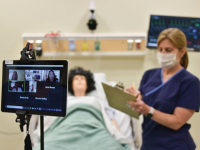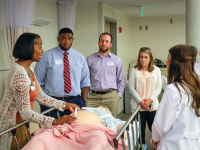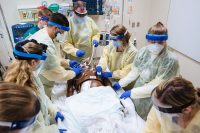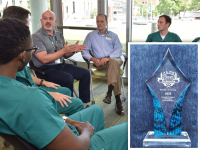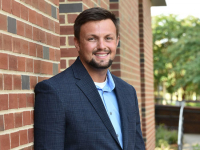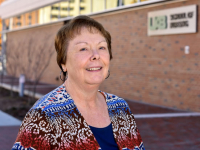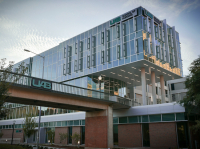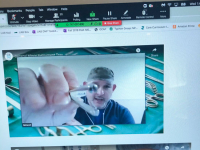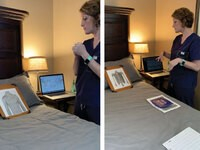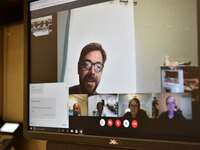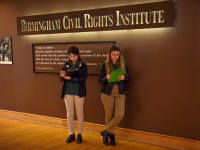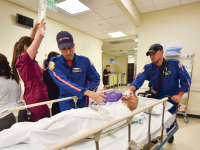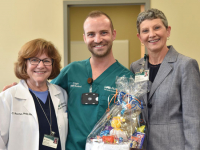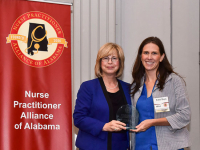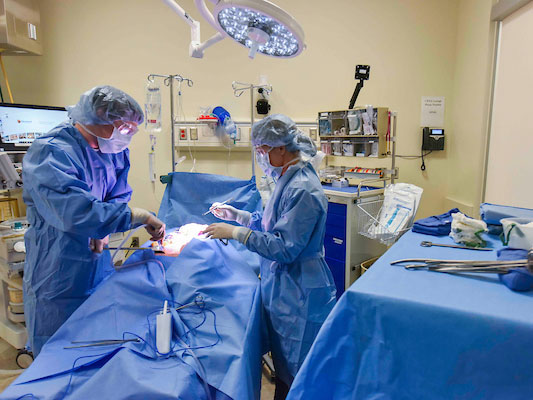
By Laura Gasque
Simulation and emerging technologies are at the forefront of nursing education in the new AACN Essentials. The UAB School of Nursing has been a recognized leader in providing innovative and engaging experiences for students both on and off campus, experiences that have only grown over the past several years.
“You don’t have to be in a simulation lab to do sim,” said Associate Professor and Interim Associate Dean for Clinical Simulation for Technology and Innovation Penni Watts, PhD, RN, CHSE-A, FSSH, FAAN (PhD 2015). “The COVID-19 pandemic forced us to think this way, but we realized it’s not a bad thing to engage students where they’re at as long as it's in a purposeful way.”
Distance simulation has been implemented in several areas, including in the Doctor of Nursing Practice Program to strengthen project planning and development, as well as build communication and leadership skills. Embedding simulation into distance-accessible DNP courses has helped improve student preparedness and project rigor said Associate Professor and Assistant Dean for Graduate Clinical Education – DNP and other Pathways, Curry Bordelon, DNP, MBA, CRNP, CNE (DNP 2016).
The DNP project simulation is a graded activity within the project development course. Students engage in a 60-minute simulation consisting of prebrief, simulation activity via zoom, debrief and evaluative feedback. The intent is for students to present the project idea to key stakeholders of the simulated organization for buy-in, support and alignment with organizational outcome needs. Students practice how to plan, develop and lead quality improvement initiatives, critically think and collaborate effectively with a health care team.
“Within the DNP program we continue to look for ways to innovate and meet the needs of modern health care,” Bordelon added. “By including simulation in the DNP program, our students engage in an experience that expands knowledge and builds skills necessary to improve health outcomes.”
The School, Watts said, also is working to expand real-life scenarios and technologies to help prepare students for situations they will encounter in practice. The latest addition to the simulation lab is an abdomen training system—a sophisticated simulation tool designed to provide a realistic and immersive experience in surgery to enhance skills, teamwork and decision-making in a controlled environment. The abdomen model replicates real anatomical structures, and simulates bleeding and use of suction.
Students in the Registered Nurse First Assist subspecialty were the first to try the new abdominal simulator during a recent on-site intensive. Each student was assigned a specific role within the surgical team. During the case, an unexpected complication occurred, requiring students to collaborate and communicate effectively to ensure smooth workflow and patient safety.
“Task trainers like this surgical abdomen increase realism in our simulation scenarios which results in heightened engagement and learning,” said Assistant Professor Tracie White, DNP, CRNP, ACNP-BC, CNOR, CRNFA (MSN 2010, DNP 2017). “The RNFA students felt like they were in a case in the operating room and experienced real stress when they encountered unexpected stress when they encountered unexpected bleeding. The features of the mannikin gave them this opportunity in a controlled environment so that they will be prepared when this happens in a real operating room.”

